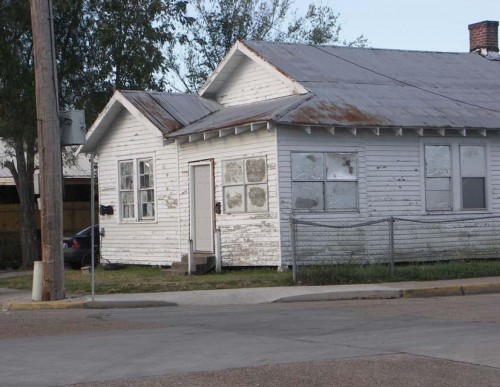Tuesday, Nov. 16
November 16, 2010
Neighbors angered over blight
November 18, 2010Perhaps, at long last, the time has come to talk about the elephant in the room.
Up to now, timid lawmakers have only dared whisper of the possibility of closing Louisiana’s two predominantly black universities and merging them with larger, mostly white schools. But now perhaps more serious, yes, even bolder consideration should be given not only to closing Grambling and Southern universities, but perhaps a few other four-year colleges in Louisiana as well.
Letter writers and bloggers have broached the subject more frequently as of late as the state’s economic plight worsens but as yet no member of the legislature, the Louisiana Board of Regents, nor the University of Louisiana System’s Board of Supervisors has summoned the political courage to address the issue.
Nor has Gov. Jindal or anyone else on the fourth floor of the State Capitol.
The existence of three four-year public universities within 40-50 miles of each other, though a benign issue in better times, has suddenly become a topic that must finally be addressed.
In north Louisiana, the University of Louisiana-Monroe (ULM), Louisiana Tech, and Grambling State universities are situated only about 40 miles apart on I-20.
In south Louisiana, Southeastern Louisiana University, LSU, and Southern University are in relative proximity to each other with Southern and LSU both in Baton Rouge and Southeastern only about 45 miles away.
In the central part of the state, LSU-Eunice and LSU-Alexandria are a mere 50 miles apart. Granted, LSU-Eunice is a junior college, but does that justify the existence of two public institutions of higher learning so near each other serving essentially the same constituency?
For that matter, is there really a need for the University of New Orleans and Southern University-New Orleans to be located in the same city with Nicholls State only 42 miles away in Thibodaux?
Three junior colleges, Bossier Community College, Southern University-Shreveport, and LSU-Shreveport sit within shouting distance from one another in the adjacent parishes of Caddo and Bossier.
That many junior colleges and four-year universities as close to each other as these schools are is not the wisest investment of taxpayer dollars. When the state was flush with oil and gas money, it didn’t seem to matter.
But that was before the existence of today’s $106 million state budget deficit. The combined budgets of ULM and Grambling were $126.3 million in 2009-2010 and the combined proposed budgets of the two schools for 2010-2011 approach $135 million. Add Northwestern to the mix and the numbers jump to $198.1 million and $210.3 million, respectively. Throw in the three junior colleges in the Shreveport area and, well, you get the picture.
Merging two or more of the institutions would not produce an automatic savings equal to the combined budget of one or more of the schools being phased out because one school would have to absorb many of the displaced students, professors, and instructors.
But the elimination of athletic programs, (coaches’ salaries and athletic scholarships), administrative fees, including salaries for university presidents, the various vice presidents, deans, assistant deans, department heads, etc., by merging several schools into only three or four four-year schools instead the dozen we now have would result in slashing expenditures by tens of millions of dollars n perhaps as much as a half a billion dollars.
Curricula at many schools are nearly identical and replication could be eliminated in these areas as well. While some schools specialize in certain degree programs n the pharmacy program at ULM comes to mind n there is considerable overlap in curricula from school to school.
Why has this issue not been addressed by the powers that be? The answer is simple. Louisiana’s black political leaders and educators understandably want to protect their heritage at all cost and a big part of that heritage is represented by the two predominant black universities, Southern and Grambling and Southern’s Shreveport and New Orleans campuses. To close the black schools is to flirt with political disaster. The issue is an emotional powder keg that no one wants to ignite.
Even in cities like Lake Charles, Thibodaux, Alexandria, and Hammond, where the issue is not one of black heritage, the local political leaders, chambers of commerce, and legislators will do all in their power to retain their four-year institutions as part of their own identity.
They would never agree to turning Nicholls, Northwestern, McNeese, UNO, LSU-A, or Southeastern into junior colleges. Nor would they be likely to agree to merge Bossier Community College, Southern-Shreveport, and LSU-Shreveport even though virtually every economic consideration suggests it would be the fiscally prudent action to take.
That’s not to say it can’t be done. Gov. Dale Bumpers did it in Arkansas in 1971, when Arkansas A&M, a predominantly black school, was merged with the University of Arkansas.
But as one political observer said years ago, “They’ll close LSU before they close Grambling.”






